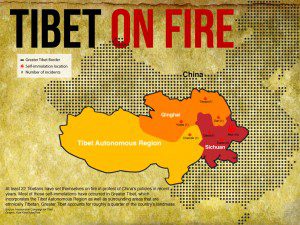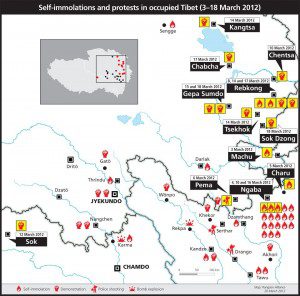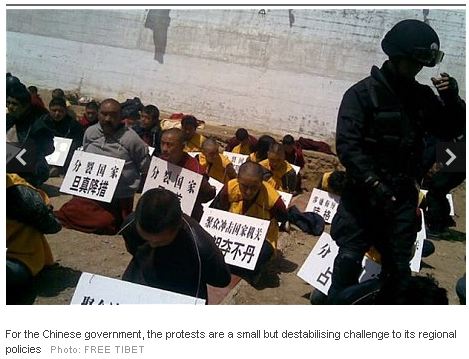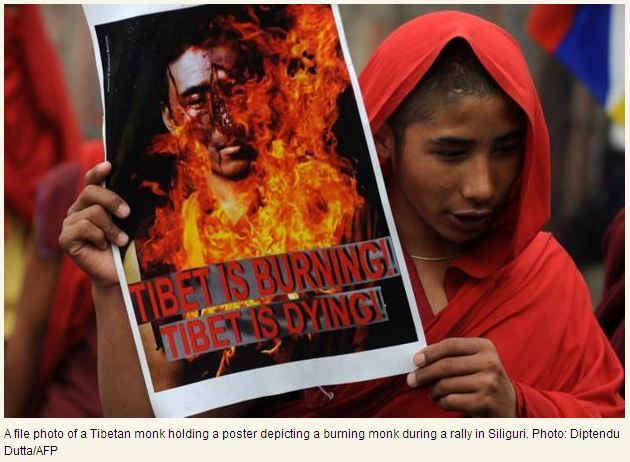http://www.youtube.com/watch?v=Z_8B7oG2flc#!
As those of you who read this blog know, I’m a strong supporter of Tibetan independence from China. Real autonomy, as advocated by H.H. the Dalai Lama, would be a welcome step, but in truth, the people of Tibet deserve the return of the country that was violently stolen from them just 60 years ago (between 1951 and 1959).
The realities on the ground are incredibly complicated, as roughly 1/6 of the population of Tibetans has been wiped out under Chinese rule and millions of (mostly) Han Chinese have been relocated to Tibet. The culture, epitomized and preserved by the institutions of Tibetan Buddhism, has been even further damaged. Of an estimated 6000 monasteries existing in 1950, only 12 were spared destruction. Some have been rebuilt, but only under close watch of Chinese officials, who regulate the monastic education and imprison those who speak out against the ongoing occupation of their country. Photos depicting the Dalai Lama are banned.
The history of Tibet is very important for understanding current events. Three books I would recommend reading are
- John Powers’ “Introduction to Tibetan Buddhism” (for a comprehensive and very readable survey, focusing on the religion),
- Geoffrey Samuel’s “Civilized Shamans: Buddhism in Tibetan Societies” (which is much more focused on ethnography/anthropology), and
- John Powers’ “History as Propaganda” (where Powers examines not only the political claims made by Chinese and Tibetan authors and their supporters, but also the discourse itself).
However, this is only a start, and it won’t get you up-to-date, interactive information for what is going on in Tibet right now.
In steps my friend Joshua Eaton, creator of Tibet on Fire, “an online platform that tells the story behind the Tibetan self-immolations, arrests, and demonstrations in Tibet.” Right now, Tibet on Fire is in the development stages and could use your help. As a blogger and educator, I currently rely on a number of sources for information on Tibet: Western media, Tibetan official sites, activist sites (and Joshua’s twitter feed!). The idea of having all of this information in one place is very exciting.
Images like those below need to be authenticated, archived, sorted, and made accessible. A lot of people, primarily people who are in or close to the Chinese government, discount news of what is happening in Tibet. They blame America, they blame the Dalai Lama. And if that doesn’t work, they claim that everything is really okay in Tibet. Such talk is ridiculous to those who have any idea of what is going on there, but to the untutored outsider, they might seem to hold a grain of truth. Much like the issue of climate change, the problem is often simply ignorance. The solution: information that can bring on wisdom.
Tibet on Fire will make the massive amount of information on the self-immolations, protests, and arrests in Tibet available in a way that is engaging, insightful, and easy to understand.
We’ll make everything that we create free and available for anyone to copy, use, and share through a Creative Commons license. Then we’ll spread the word to other media organizations, journalists, and activists.
Click here for the indigogo page for Tibet on Fire.
Some examples (most from previous blog posts here) of what we can look forward to when Tibet on Fire launches:
















